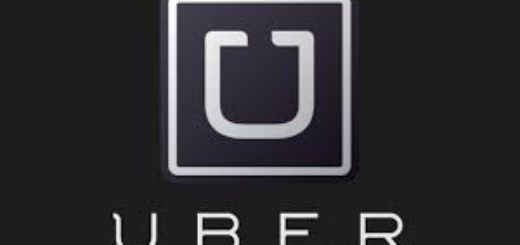TBT: POS – Point of Sale or Piece of Sh*t?!
Depending on the day, the meaning of the acronym “POS” really appears to have been intentionally chosen. The POS – point of sale system, aka modern day cash register – of any restaurant or retail business serves as a company’s transactional heartbeat, and when things don’t go well, it can cause a great deal of pain. Imagine a long line of people waiting to order food, and a cashier punching buttons like mad on a keypad that nobody in line can see. You’ve all experienced it. From the 90’s until the last 5 years, these POS systems could crash at anytime and business would come to a crashing halt.
On my 31st birthday in November of 2000, in a moment of frustration, I wrote a pseudo-back-of-the-cocktail business plan for a new kind of POS company. Seventeen years later, its fun to come across it every so often and see how much of it has now become common practice. Most people reading this will choose to drop out now… but a few who know this space might find what follows interesting…. especially in that it was written using paper and pen, and only years later transcribed into a computer. It wasn’t that I didn’t have a lap top then, it was that my brain still functioned better with a pen or pencil in hand than it did staring at a keyboard and a screen. Amazing how things have changed.

Project POiSon
November 8, 2000
The Problem:
In a nutshell, outdated, overpriced POS (point-of-sale) systems that have a lock on the information systems available to small and large restaurant chains.
Why hasn’t the problem gone away?
- Resistance by major POS companies to evolve (ie. Micros, Aloha, Posi)
- Slowness of these same companies due to installed systems that haven’t finished their target life/ROI cycle
- Hard to get restaurants to adopt new technology, especially if they’ve already sunk big dollars into one of the above
- Big restaurant chains enable the high margins & maintenance rates
Other Major Issues include:
- Inability to use information easily – most of today’s POS systems still rely on the printer to get information to users. In order to get beyond this phase, another large investment is usually required to get the information to a central storage area. In both cases, reports are inflexible and are pre- formatted. They lack adequate filters, what-if scenarios, and the ability to easily integrate with other critical business applications.
- Inability to remotely access info – Again, without significant investments ($5- 25K + monthly charges) the information for each location is stuck at that location. A manager could use PC anywhere from home, although the reliability and speed of that technology is marginal.
- Inability to Easily Integrate with other small business applications. MSFT Office (Excel), Intuit Quicken/Quickbooks, Peachtree, CRM Software for repeat customers (Goldmine, etc.)
- Inability to know customers – In the last 12-24 months, new companies have emerged to allow restaurants to capture customer info and get instant feedback right at the register (Gazelle Systems, for e.g.). Again, a major investment and the current technology available is either ALL or NONE, meaning the ability to capture vital info must include non-critical demographics (ie. dog owner) which keeps the price too high (only avail to largest restaurant companies).
- On-site maintenance still necessary and very costly
- POS Business Models allow only large restaurant chains to be profitable customers…
Proposed Solution
POS “System” that can be installed in any PC-compatible computer, including most hardware that houses the major POS software available today.
Major Characteristics:
- All data transferred real-time to central storage area
- Ability to make company-wide POS changes via central point, from any computer connected to the internet.
- Ability to access any info (controlled by user passwords) from any computer via the internet.
- Subscription rate vs. capital investment. 1-3 year contracts improve price. Maintenance fees must be included (ie. can’t drive without maintenance)
- Ability to integrate with key related software packages, as well as generate “windows-friendly”, excel compatible reports on its own.
Market Potential
Restaurants/Foodservice: Quick-serve:
Full-Serve:
Technology Budget:
$310B
$110B (fastest-growing) $100B (??)
~2% = 2.2-4.2B ~5% = 5.5-10.5B
Key Players:
Micros, Positouch, Aloha, Squirrel
Strategy:
- Dominate Technology Expenditures in the quick-serve and full-serve restaurant biz
- 1% would mean approximately 30-50mm annual sales ($300-$500M valuation?)
- -Goals:
o 1%byYear2o 5% by Year 3 (assuming large capital infusion)o 20% by Year 4 (IPO)
o 30% byYear5 - Pricing Structure:
o 1 unit = 500/month/unit
o 2-3 units = 450/month/unit
o 3-10 units = 425/month/unit o 11-50 units = 400/month/unit o 50+ units = 375/month/unitPOiSon Management Team:
CEO: John Pepper
Developer #1: Komiko (currently PosiTouch)
CTO: Tom (?)
Sales: Rob Cotton
Advisors:
Bruce Fernie – TeaLuxe
Howard Schultz – Starbucks
Mike Hislop – Il Fornaio
Paul Clayton – Jamba Juice




Recent Comments